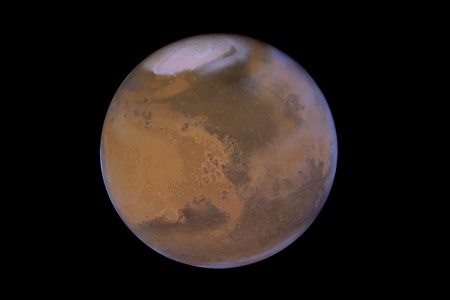 Space enthusiasts around the world are taking to Twitter to post their own depictions of Mars, drawing from data shared by the UAE.
Space enthusiasts around the world are taking to Twitter to post their own depictions of Mars, drawing from data shared by the UAE.
The Emirates Mars Mission released its first full science data set, including data from its three instruments, on October 1. About 500 images from the Emirates Exploration Imager (EXI) system are included in the data set and thousands more are expected with the next release in January 2022.
Emirates Mars Mission science lead Hessa Al Matroushi, said: “We have been very pleased seeing the Mars images captured by Hope probe being shared over Twitter by the local and international community. The diverse range of treatments of the EXI images has opened up new views and perspectives.”
The EXI camera is capable of taking high-resolution images and is being used to measure properties of water, ice and ozone in Mars’ atmosphere. EXI was developed at the University of Colorado Boulder, in collaboration with the Mohammed bin Rashid Space Centre.
In the first ten days of the data release, some 2 terabytes of information have so far been downloaded from the Science Data Centre at the EMM website, of which 1.5 terabytes is EXI data.
Matroushi added: “EXI has already surpassed our expectations and its first observations have been taking place throughout the Martian cloudy season. We know that, during this time – spring and summer in the Martian northern hemisphere, a belt of clouds forms near the equator. We’re now able to see daily changes and are building a library that will allow us to measure seasonal changes in the dynamics of those cloud formations.”
The Emirates Mars Mission is studying the relationship between the upper layer and lower regions of the Martian atmosphere, giving the international science community full access to a holistic view of the Martian atmosphere at different times of the day, through different seasons.
The Mission’s Hope Probe is following its planned 20,000 – 43,000 km elliptical science orbit, with an inclination to Mars of 25 degrees, giving it a unique ability to complete one orbit of the planet every 55 hours and capture a full planetary data sample every nine days throughout its one Martian year (two Earth year) mission to map Mar’s atmospheric dynamics.
The Hope Probe’s historic journey to the Red Planet coincides with a year of celebrations to mark the UAE’s Golden Jubilee.














Add Comment